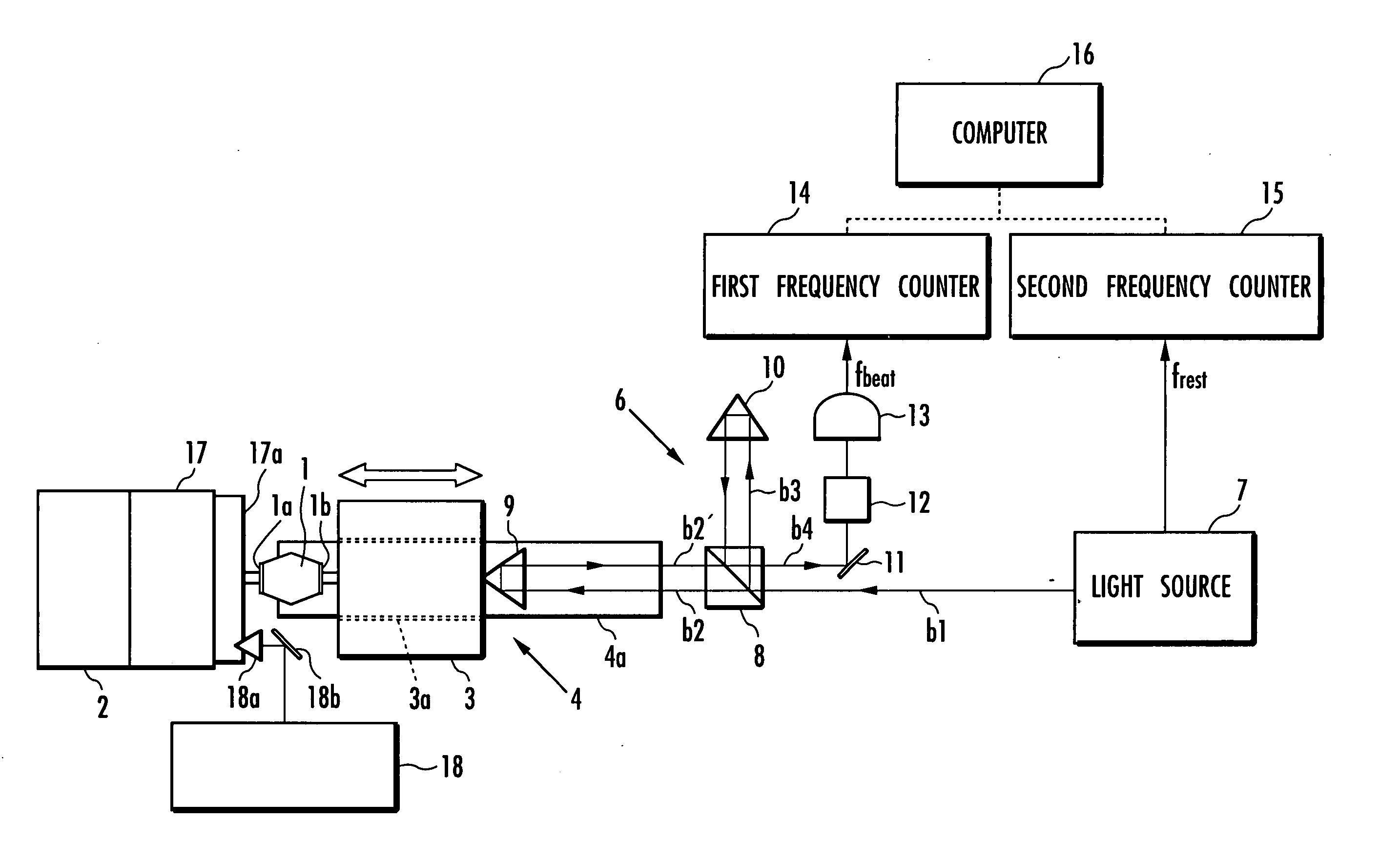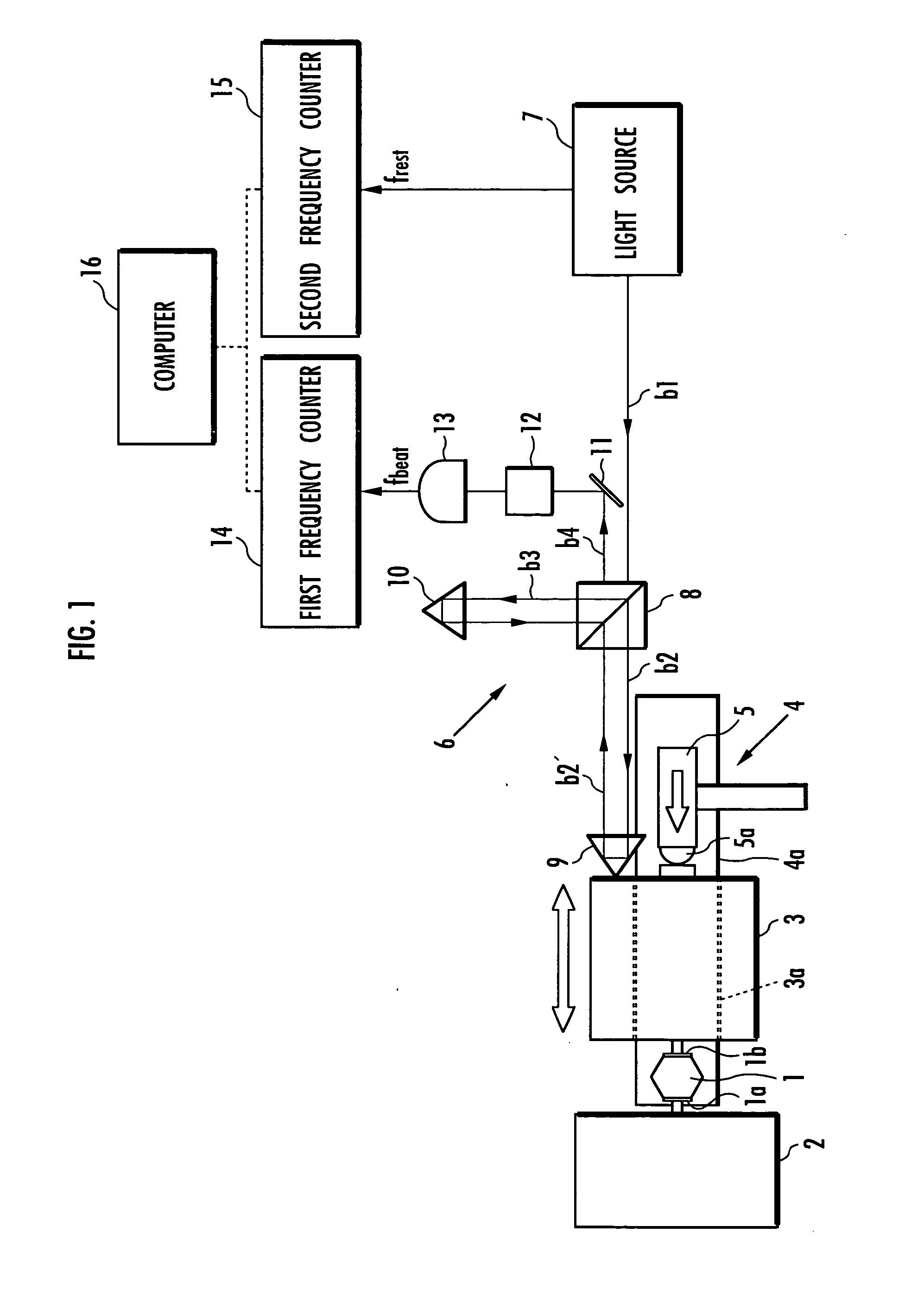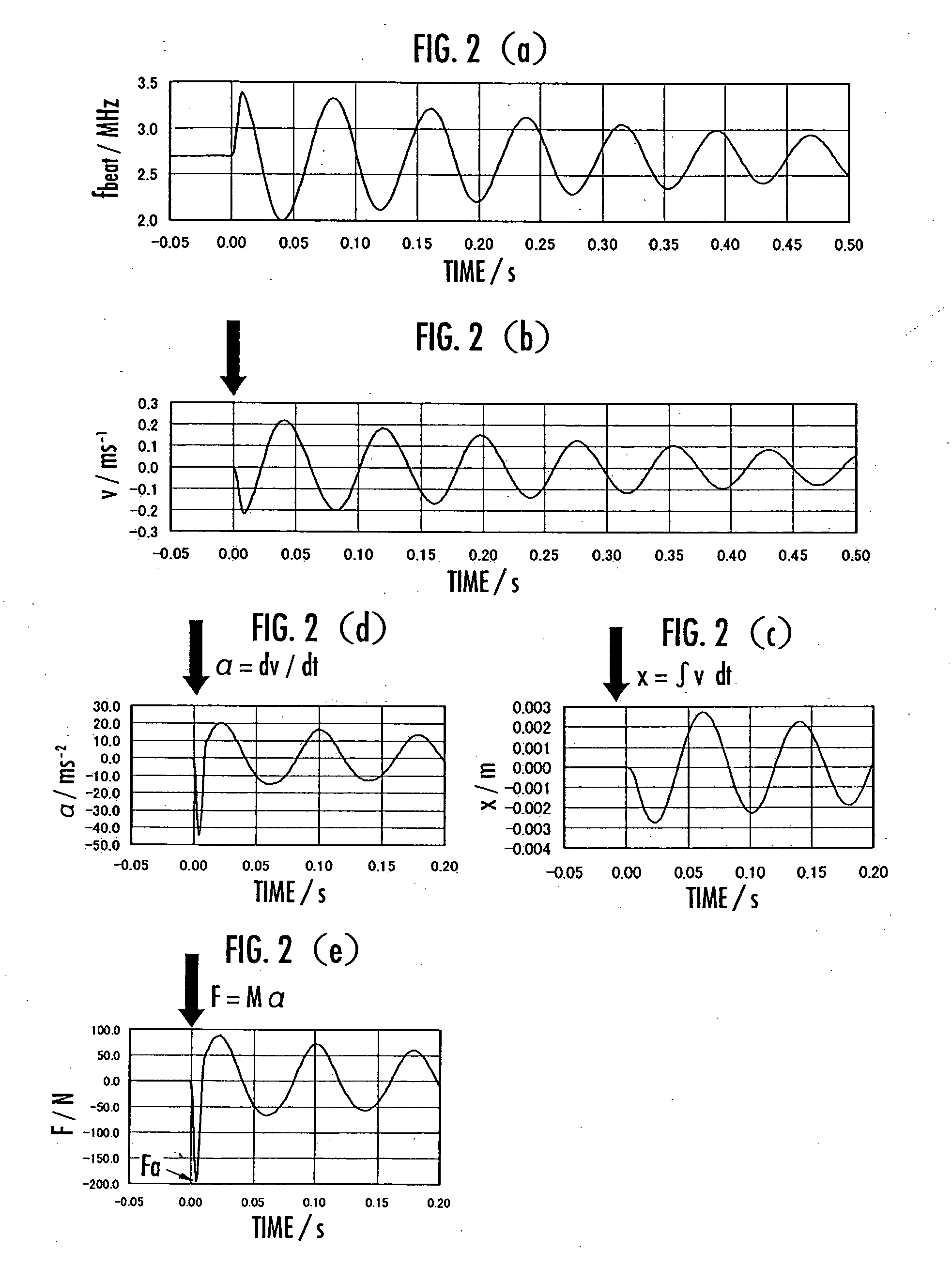Material testing method
a testing method and material technology, applied in the direction of force measurement, acceleration measurement using interia forces, instruments, etc., can solve the problems of inability to accurately measure dynamic force, inability to guarantee measurement accuracy, and delay in the response the change in the shape of the output of the sensor
- Summary
- Abstract
- Description
- Claims
- Application Information
AI Technical Summary
Benefits of technology
Problems solved by technology
Method used
Image
Examples
first embodiment
[0022] In the first embodiment, an impulsive force is applied by a hammer 5 to the weight 3 to apply vibration to the mass-spring system. The hammer 5 has a rubber pad 5a at its tip. Upon the application of vibration, the force exerted from the weight 3 to the object to be measured 1 and the force exerted from the object to be measured 1 to the weight 3 are equal in magnitude but opposite in direction according to the action-reaction law. Further, since the weight 3 is supported by the pneumatic linear bearing 4 and therefore the frictional force acting on the weight 3 is negligible, the inertial force F of the weight 3 becomes equal to the force exerted from the object to be measured 1 to the weight 3. In other words, it can be considered that the inertial force F of the weight 3 is a parameter that accurately represents the force acting on the object to be measured 1. It can also be considered that the displacement x of the weight 3 is a parameter that accurately represents the st...
second embodiment
[0032] For material tests using the testing apparatus according to the first or second embodiment, various types of measurement equipment that cover the whole field of view can be provided in order to check the internal distribution of acceleration, velocity, and displacement of the object to be measured 1. The material testing method can also be combined with a numerical analysis method such as a finite element method. It enables a more sophisticated evaluation of mechanical properties of materials. Further, the use of a small weight, such as a weight of about 1 g, as the weight 3 makes it possible to carry out material tests on small forces, such as forces of about 1 μN or less. In this case, it is possible to test the mechanical properties of various materials used in a micromachine or nanomachine and the like.
[0033] Further, in the testing apparatuses according to the first and second embodiments, the direction of the motion of the weight 3 is horizontal, but the linear bearing ...
PUM
 Login to View More
Login to View More Abstract
Description
Claims
Application Information
 Login to View More
Login to View More - R&D
- Intellectual Property
- Life Sciences
- Materials
- Tech Scout
- Unparalleled Data Quality
- Higher Quality Content
- 60% Fewer Hallucinations
Browse by: Latest US Patents, China's latest patents, Technical Efficacy Thesaurus, Application Domain, Technology Topic, Popular Technical Reports.
© 2025 PatSnap. All rights reserved.Legal|Privacy policy|Modern Slavery Act Transparency Statement|Sitemap|About US| Contact US: help@patsnap.com



